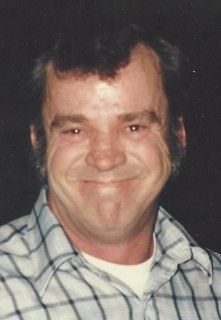Cut hay now and cut it high for best yield, persistence

COLUMBIA, Mo. — It’s time to make the first cutting of hay in Missouri, says University of Missouri Extension state forage specialist Craig Roberts.
Waiting too long leads to poor-quality feed for livestock next winter. For best quality, harvest hay in May before seed heads pollinate, says Roberts.
Early cutting helps pastures reset for later, says Roberts. The regrowth will make better-quality hay. If you wait, cool-season grasses go into summer slump, growing little in July and August. Regrowth may not come until fall rains return.
There are other risks in waiting, says Roberts. Waiting lowers quality and increases the chance that ergot fungus can appear in seed heads. Ergot infects most grasses and small grains in the summer.
Avoid temptation to cut too low
Cut now, but avoid the temptation to cut too low and scalping the stand of grass, says MU Extension agronomist Tim Schnakenberg.
Pastures cut too short may require future renovation or replanting.
Plants need leaf residual for photosynthesis, root health
Cutting too low reduces the amount of leaf exposed to the sun. Plants need some leaf residual to capture energy from the sun to rebound from cutting. Without enough leaves, the plant must rely on root reserves to bounce back for the next cut.
Cutting too much top growth in grasses removes growing points and reduces the amount of leaf exposed to the sun. If leaves are cut too short and too often, roots die back because there is not enough photosynthesis to feed them.
Removing all top growth can sometimes set grass back two weeks, which reduces the growing season by two weeks for the year each time it is scalped.
Cutting too many leaf swards consistently weakens the plant and makes it less resilient over time. Good root systems help plants withstand dry periods.
Higher cuts improve persistence
Cutting height greatly affects persistence, says Schnakenberg.
Research on orchardgrass from Ray Smith at the University of Kentucky compared the effects of ½-inch, 2-inch and 4-inch cutting heights. After the fifth cutting, the ½-inch cutting had 16%-22% of the stand left across all fertility treatments. The 2-inch cutting had 45%-50% of the stand left, and the 4-inch cutting had around 96%-100 % of the stand still going strong.
High cuts lead to more weeds
Lower cuttings also lead to more weeds. The research also showed significant differences in weed infestations. The percentage of weed in the ½-inch cutting was 48%, 12% on the 2-inch cutting and only 5% on the 4-inch cutting.
In a press release, Schnakenberg said, “This is a great reminder that low harvests open up the forage canopy and allow light to penetrate. Bare soil gets exposed, allowing weed explosions in the field.”
“Sunlight exposure to bare soil also heats up the soil in the summer months and weakens both the crowns and the root systems of cool-season forages already suffering in the heat. A residual cover acts as an insulator in many ways for the crop against the harshness of the environment.”
Based on this research, Schnakenberg recommends 4-inch cuttings for cool-season grasses and 8-inch cuttings for native grasses.
High cuts mean more tonnage
Schnakenberg cites older studies from the University of Tennessee that show that higher cutting of 10 inches in sorghum-Sudangrass yielded the highest tonnage and best quality throughout the season compared to the 1-inch and 6-inch cuttings in the same study.
Contact your local MU Extension agronomist to learn more about harvest cutting heights for your forages.
Miss Clipping Out Stories to Save for Later?
Click the Purchase Story button below to order a print of this story. We will print it for you on matte photo paper to keep forever.

